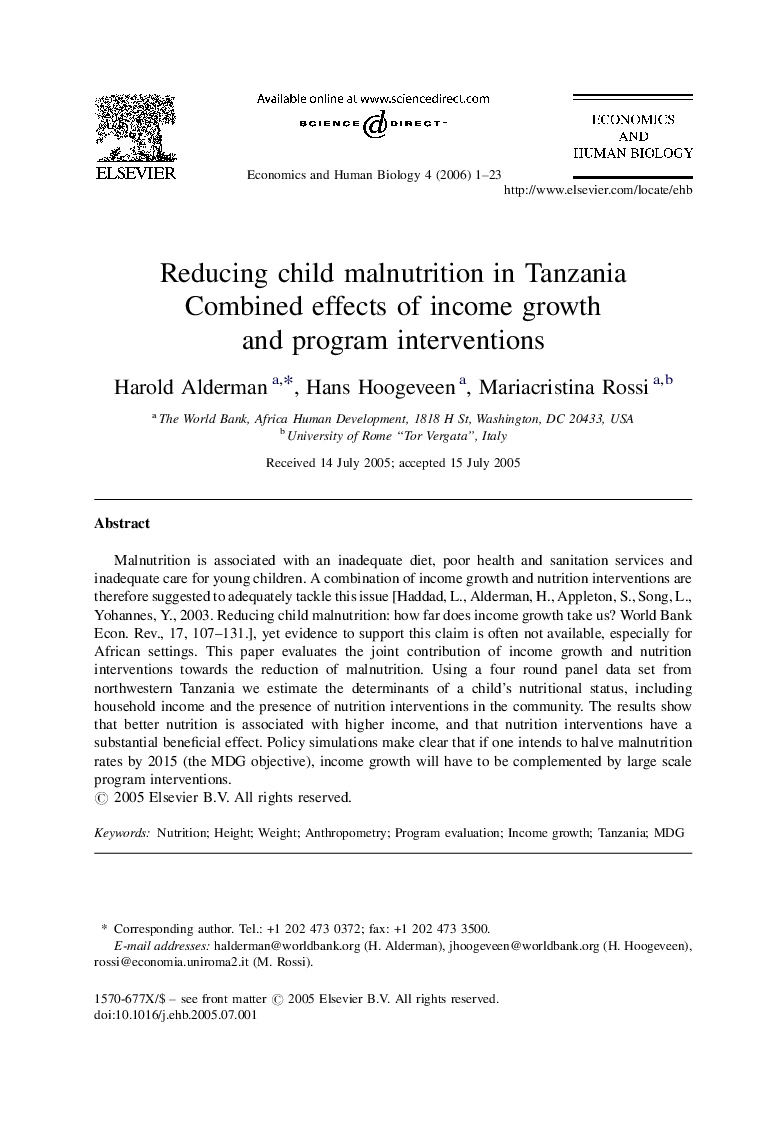| Article ID | Journal | Published Year | Pages | File Type |
|---|---|---|---|---|
| 5057490 | Economics & Human Biology | 2006 | 23 Pages |
Malnutrition is associated with an inadequate diet, poor health and sanitation services and inadequate care for young children. A combination of income growth and nutrition interventions are therefore suggested to adequately tackle this issue [Haddad, L., Alderman, H., Appleton, S., Song, L., Yohannes, Y., 2003. Reducing child malnutrition: how far does income growth take us? World Bank Econ. Rev., 17, 107-131.], yet evidence to support this claim is often not available, especially for African settings. This paper evaluates the joint contribution of income growth and nutrition interventions towards the reduction of malnutrition. Using a four round panel data set from northwestern Tanzania we estimate the determinants of a child's nutritional status, including household income and the presence of nutrition interventions in the community. The results show that better nutrition is associated with higher income, and that nutrition interventions have a substantial beneficial effect. Policy simulations make clear that if one intends to halve malnutrition rates by 2015 (the MDG objective), income growth will have to be complemented by large scale program interventions.
